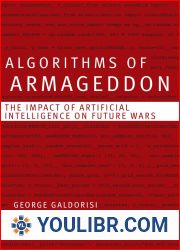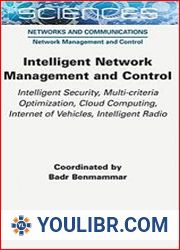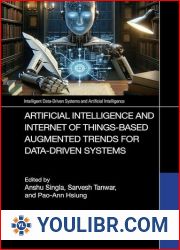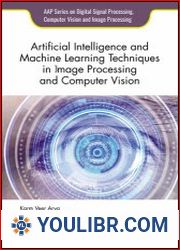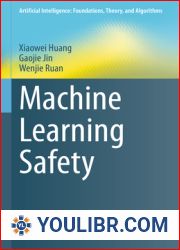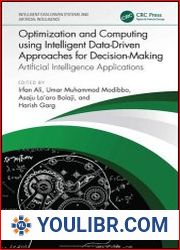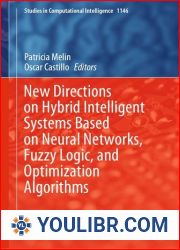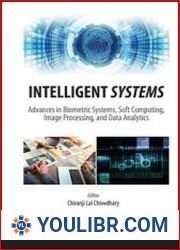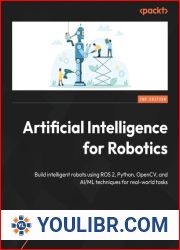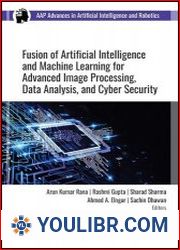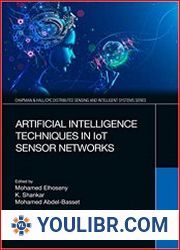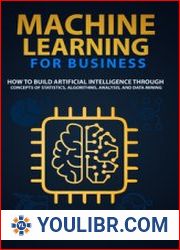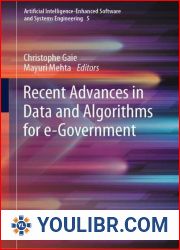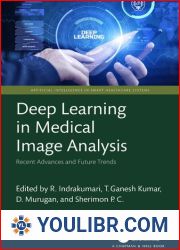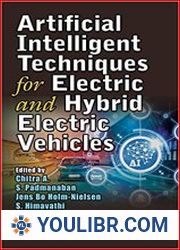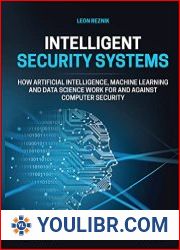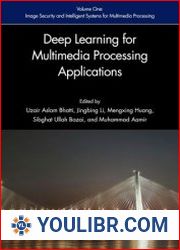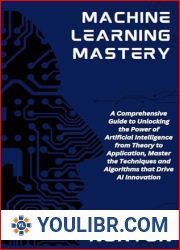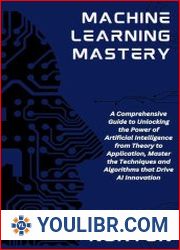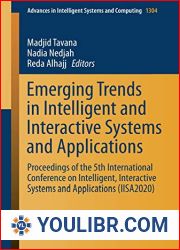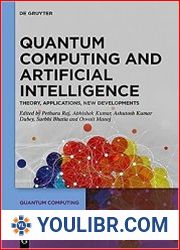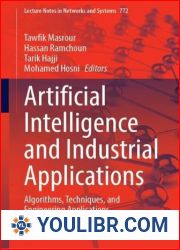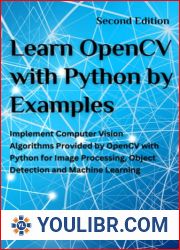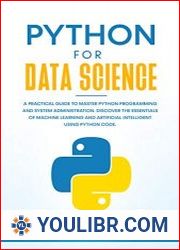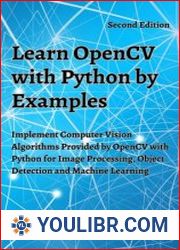
BOOKS - Artificial Intelligent Algorithms for Image Dehazing and Non-Uniform Illumina...

Artificial Intelligent Algorithms for Image Dehazing and Non-Uniform Illumination Enhancement
Author: Teena Sharma, Nishchal K. Verma
Year: 2024
Format: PDF
File size: 10.5 MB
Language: ENG

Year: 2024
Format: PDF
File size: 10.5 MB
Language: ENG

Artificial Intelligent Algorithms for Image Dehazing and NonUniform Illumination Enhancement The rapid evolution of Artificial Intelligence (AI) has introduced a plethora of effective image processing tools that play a pivotal role in fortifying vision-based applications. These applications rely heavily on the quality of input images, particularly those containing intricate textural details. The success of these applications hinges on the quality of the input images, which can be adversely impacted by atmospheric factors such as haze and uneven illumination. When haze particles are present, they impede the transmission of reflected light rays to the observer, resulting in an elevation of airlight and causing the image to exhibit a hazy appearance. Conversely, nonuniform illumination conditions contribute to a darkened depiction of the captured scene, leading to the obscuring of visible features. Therefore, image enhancement emerges as a crucial preliminary step aiming to revive textural intricacies and refine image details. This enhancement process is essential in bolstering the resilience of vision-based applications, ensuring their optimal performance even in challenging environmental circumstances. The book provides a detailed explanation of AI algorithms for image dehazing and nonuniform illumination enhancement, outlining unsupervised and supervised methods with their advantages and limitations. It begins by exploring the scenario when it is impractical to have a large set of datasets for training an AI algorithm for image enhancement.
Искусственные интеллектуальные алгоритмы для обработки изображений и улучшения неравномерного освещения Быстрая эволюция искусственного интеллекта (ИИ) представила множество эффективных инструментов обработки изображений, которые играют ключевую роль в укреплении приложений на основе зрения. Эти приложения в значительной степени зависят от качества входных изображений, особенно тех, которые содержат сложные текстурные детали. Успех этих применений зависит от качества входных изображений, на которое могут отрицательно влиять атмосферные факторы, такие как помутнение и неравномерное освещение. Когда присутствуют мутные частицы, они препятствуют пропусканию отраженных световых лучей к наблюдателю, что приводит к повышению уровня воздушного света и заставляет изображение демонстрировать мутный вид. И наоборот, неоднородные условия освещения способствуют затемнению изображения захваченной сцены, что приводит к затемнению видимых признаков. Поэтому улучшение изображения появляется как важный предварительный шаг, направленный на возрождение текстурных сложностей и уточнение деталей изображения. Этот процесс усовершенствования имеет важное значение для повышения устойчивости приложений на основе видения, обеспечивая их оптимальную производительность даже в сложных условиях окружающей среды. В книге представлено подробное объяснение алгоритмов ИИ для дегазации изображений и улучшения неравномерной освещенности с изложением неконтролируемых и контролируемых методов с их преимуществами и ограничениями. Он начинается с изучения сценария, когда нецелесообразно иметь большой набор наборов данных для обучения алгоритма ИИ для улучшения изображения.
Algorithmes intelligents artificiels pour le traitement d'image et l'amélioration de l'éclairage inégal L'évolution rapide de l'intelligence artificielle (IA) a présenté de nombreux outils de traitement d'image efficaces qui jouent un rôle clé dans le renforcement des applications basées sur la vision. Ces applications dépendent fortement de la qualité des images d'entrée, en particulier celles qui contiennent des détails de texture complexes. succès de ces applications dépend de la qualité des images d'entrée, qui peuvent être affectées négativement par des facteurs atmosphériques tels que la confusion et l'éclairage inégal. Lorsque des particules turbides sont présentes, elles empêchent la transmission des rayons lumineux réfléchis à l'observateur, ce qui entraîne une augmentation du niveau de la lumière de l'air et fait apparaître une vue trouble à l'image. Inversement, des conditions d'éclairage non homogènes contribuent à assombrir l'image de la scène capturée, ce qui a pour effet d'assombrir les traits visibles. L'amélioration de l'image apparaît donc comme une étape préliminaire importante visant à relancer les complexités textuelles et à affiner les détails de l'image. Ce processus d'amélioration est essentiel pour améliorer la résilience des applications fondées sur la vision, en garantissant des performances optimales même dans des conditions environnementales difficiles. livre fournit une explication détaillée des algorithmes d'IA pour dégazer les images et améliorer l'éclairage inégal, en décrivant les méthodes incontrôlées et contrôlées avec leurs avantages et leurs limites. Il commence par étudier un scénario où il n'est pas possible d'avoir un grand ensemble de données pour apprendre un algorithme d'IA pour améliorer l'image.
Algoritmos inteligentes artificiales para el procesamiento de imágenes y la mejora de la iluminación desigual La rápida evolución de la inteligencia artificial (IA) introdujo muchas herramientas eficientes de procesamiento de imágenes que juegan un papel clave en el fortalecimiento de aplicaciones basadas en la visión. Estas aplicaciones dependen en gran medida de la calidad de las imágenes de entrada, especialmente las que contienen detalles de textura complejos. éxito de estas aplicaciones depende de la calidad de las imágenes de entrada, que pueden verse afectadas negativamente por factores atmosféricos como el nublado y la iluminación desigual. Cuando las partículas turbias están presentes, impiden que los rayos de luz reflejados pasen al observador, lo que resulta en un aumento del nivel de luz de aire y hace que la imagen muestre una apariencia turbia. A la inversa, las condiciones de iluminación heterogéneas contribuyen a oscurecer la imagen de la escena capturada, lo que lleva a oscurecer los rasgos visibles. Por lo tanto, la mejora de la imagen aparece como un paso preliminar importante dirigido a revivir las complejidades texturales y refinar los detalles de la imagen. Este proceso de mejora es esencial para mejorar la resiliencia de las aplicaciones basadas en la visión, asegurando un rendimiento óptimo incluso en entornos difíciles. libro presenta una explicación detallada de los algoritmos de IA para desgasificar las imágenes y mejorar la iluminación desigual, presentando métodos descontrolados y controlados con sus ventajas y limitaciones. Comienza estudiando un escenario en el que no es práctico tener un gran conjunto de conjuntos de datos para enseñar un algoritmo de IA para mejorar la imagen.
Künstliche intelligente Algorithmen zur Bildverarbeitung und Verbesserung der ungleichmäßigen Beleuchtung Die rasante Entwicklung der künstlichen Intelligenz (KI) hat eine Vielzahl effizienter Bildverarbeitungswerkzeuge eingeführt, die eine Schlüsselrolle bei der Stärkung von sehbasierten Anwendungen spielen. Diese Anwendungen hängen stark von der Qualität der Eingabebilder ab, insbesondere von solchen, die komplexe Texturdetails enthalten. Der Erfolg dieser Anwendungen hängt von der Qualität der Eingangsbilder ab, die durch atmosphärische Faktoren wie Trübung und ungleichmäßige Beleuchtung negativ beeinflusst werden können. Wenn trübe Partikel vorhanden sind, verhindern sie, dass die reflektierten Lichtstrahlen zum Beobachter gelangen, was zu einer Erhöhung des Luftlichtpegels führt und dazu führt, dass das Bild ein trübes Aussehen zeigt. Umgekehrt tragen inhomogene Lichtverhältnisse zu einer Verdunkelung des Bildes der aufgenommenen Szene bei, was zu einer Verdunkelung der sichtbaren Merkmale führt. Die Bildverbesserung erscheint daher als wichtiger vorläufiger Schritt zur Wiederbelebung der Texturkomplexität und Verfeinerung der Bilddetails. Dieser Verbesserungsprozess ist unerlässlich, um die Nachhaltigkeit von visionären Anwendungen zu erhöhen und sicherzustellen, dass sie auch unter schwierigen Umgebungsbedingungen eine optimale istung erbringen. Das Buch bietet eine detaillierte Erklärung der KI-Algorithmen zur Entgasung von Bildern und zur Verbesserung der ungleichmäßigen Beleuchtung und skizziert unkontrollierte und kontrollierte Methoden mit ihren Vorteilen und Einschränkungen. Es beginnt mit dem Studium eines Szenarios, in dem es nicht ratsam ist, einen großen Satz von Datensätzen zu haben, um den KI-Algorithmus zu trainieren, um das Bild zu verbessern.
''
Görüntü İşleme ve Düzensiz Aydınlatmanın İyileştirilmesi için Yapay Akıllı Algoritmalar Yapay zekanın (AI) hızlı evrimi, vizyon tabanlı uygulamaların güçlendirilmesinde önemli bir rol oynayan birçok etkili görüntü işleme aracını tanıttı. Bu uygulamalar, özellikle karmaşık dokusal detaylar içeren giriş görüntülerinin kalitesine büyük ölçüde dayanır. Bu uygulamaların başarısı, pus ve düzensiz aydınlatma gibi atmosferik faktörlerden olumsuz etkilenebilecek giriş görüntülerinin kalitesine bağlıdır. Bulutlu parçacıklar mevcut olduğunda, yansıyan ışık ışınlarının gözlemciye geçmesini önler, bu da hava ışığı seviyesinde bir artışa neden olur ve görüntünün bulutlu bir görünüm göstermesine neden olur. Tersine, düzgün olmayan aydınlatma koşulları, yakalanan sahnenin görüntüsünün karartılmasına katkıda bulunur ve bu da görünür özelliklerin karartılmasına neden olur. Bu nedenle, görüntü geliştirme, doku karmaşıklıklarını canlandırmayı ve görüntü ayrıntılarını iyileştirmeyi amaçlayan önemli bir ön adım olarak görünmektedir. Bu iyileştirme süreci, görme tabanlı uygulamaların sağlamlığını artırmak ve zorlu ortamlarda bile optimum performans sağlamak için gereklidir. Kitap, görüntüleri gazdan arındırmak ve düzensiz aydınlatmayı iyileştirmek için AI algoritmalarının ayrıntılı bir açıklamasını sunar, kontrolsüz ve kontrollü yöntemleri avantajları ve sınırlamaları ile özetlemektedir. Görüntü geliştirme için bir AI algoritmasını eğitmek için geniş bir veri kümesine sahip olmanın pratik olmadığı bir senaryoyu keşfederek başlar.
خوارزميات ذكية اصطناعية لمعالجة الصور وتحسين الإضاءة غير المتكافئة قدم التطور السريع للذكاء الاصطناعي (AI) العديد من أدوات معالجة الصور الفعالة التي تلعب دورًا رئيسيًا في تعزيز التطبيقات القائمة على الرؤية. تعتمد هذه التطبيقات بشكل كبير على جودة صور الإدخال، خاصة تلك التي تحتوي على تفاصيل تركيبية معقدة. يعتمد نجاح هذه التطبيقات على جودة صور المدخلات، والتي يمكن أن تتأثر سلبًا بعوامل الغلاف الجوي مثل الضباب والإضاءة غير المتكافئة. عندما تكون الجسيمات الغائمة موجودة، فإنها تمنع أشعة الضوء المنعكسة من المرور إلى المراقب، مما يؤدي إلى زيادة مستوى ضوء الهواء ويؤدي إلى إظهار الصورة مظهرًا غائمًا. على العكس من ذلك، تساهم ظروف الإضاءة غير الموحدة في إضعاف صورة المشهد الملتقط، مما يؤدي إلى تعتيم الميزات المرئية. لذلك، يظهر تحسين الصورة كخطوة أولية مهمة تهدف إلى إحياء تعقيدات الملمس وتحسين تفاصيل الصورة. عملية التحسين هذه ضرورية لتحسين متانة التطبيقات القائمة على الرؤية، وضمان الأداء الأمثل حتى في البيئات الصعبة. يقدم الكتاب شرحًا مفصلاً لخوارزميات الذكاء الاصطناعي للصور المزيلة وتحسين الإضاءة غير المتكافئة، وتحديد الأساليب غير المنضبطة والمضبوطة بمزاياها وقيودها. يبدأ الأمر باستكشاف سيناريو يكون فيه من غير العملي امتلاك مجموعة كبيرة من مجموعات البيانات لتدريب خوارزمية الذكاء الاصطناعي على تحسين الصورة.













